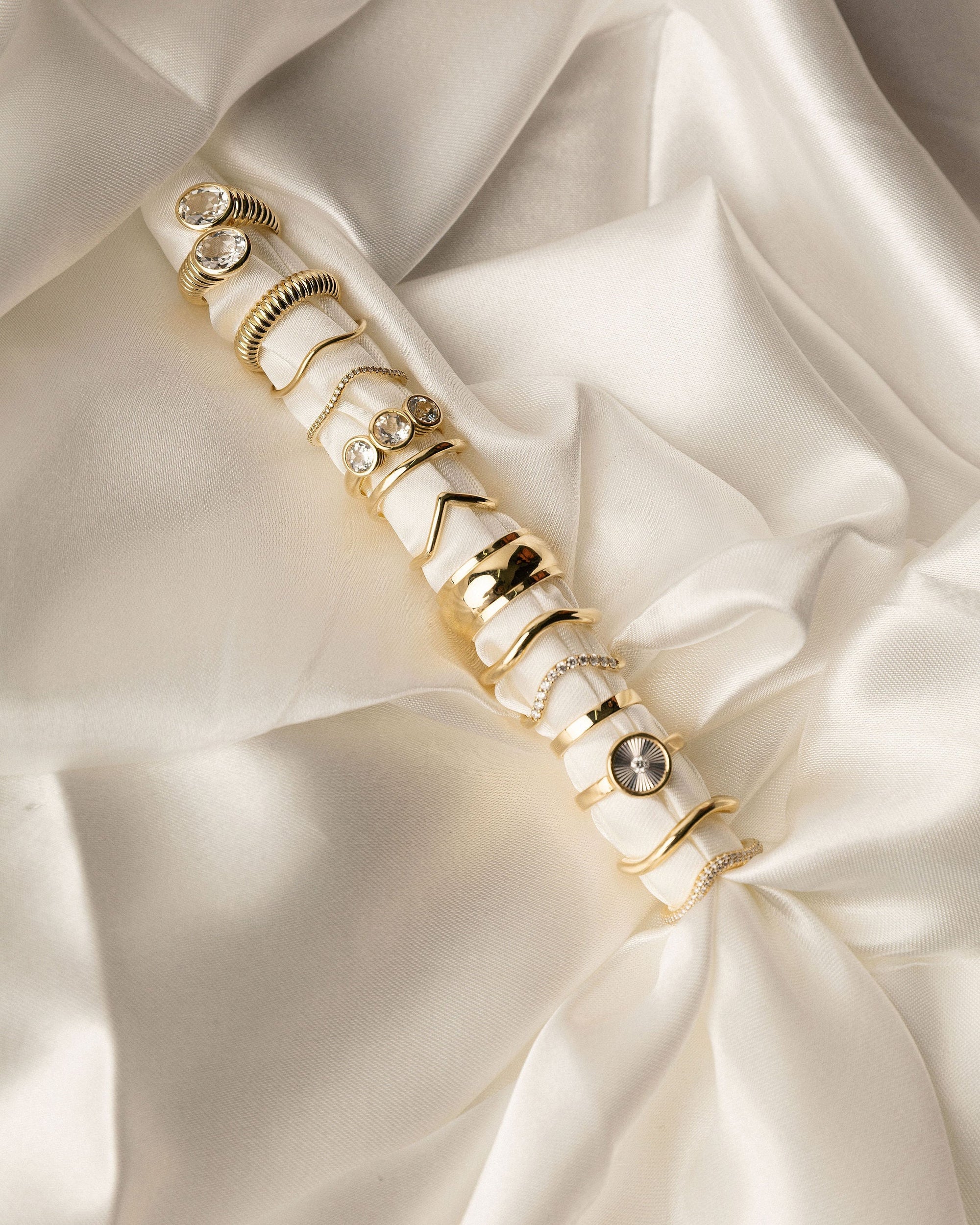Introduction: More Than Just a Ring
Signet rings are far more than decorative jewelry—they are symbols of legacy, identity, and power. Worn for thousands of years, these iconic rings have transitioned from practical seals to heirlooms and fashion statements. Whether you're exploring vintage styles or shopping for a sleek signet ring gold mens design, their relevance today continues to grow. In this blog, we uncover the rich history of signet rings, their cultural journey, and why they’ve seen a stylish resurgence.

Ancient Origins of Signet Rings
To understand what is a signet ring, we must travel back to ancient civilizations. Signet rings originated in Mesopotamia and Egypt more than four thousand years ago. These early rings were used to imprint wax seals and authenticate documents, acting as a mark of identity long before signatures became the norm. Crafted from carved gemstones or precious metals, they often bore family crests or unique emblems, and were worn by rulers, scribes, and nobles.
Their significance extended beyond function. A signet ring was a deeply personal object, often destroyed upon its owner's death to prevent misuse. These early signet jewelry rings were not only practical but also symbolic, serving as the bearer’s voice in a time when written proof was rare.
Signet Rings in Medieval Power and Nobility
During the medieval era, the signet ring reached new heights of political and social influence. They became essential tools among nobility and clergy, used to seal legal decrees, religious documents, and personal correspondence. The intricacy of the engravings reflected the wearer’s status and lineage, often featuring coats of arms, Latin mottos, or religious iconography.

Wearing a signet ring became a visible marker of authority. These rings were typically worn on the pinky finger and viewed as irrefutable identification. A vintage signet ring from this era remains highly coveted for its craftsmanship and historical context, embodying centuries of tradition and exclusivity.
Renaissance Refinement and Artistic Detail
The Renaissance ushered in a period of artistic renaissance for signet rings. As culture, science, and self-expression flourished, jewelry design followed suit. Signet rings evolved from strictly functional items to objects of beauty and refinement. Jewelers began to experiment with design, incorporating filigree work, symbolic patterns, and even colored gemstones into the rings.
These changes marked the emergence of signet rings with diamonds and other decorative elements. The engraving process also became more sophisticated, allowing for more detailed symbols, initials, and scenes to be etched into the metal. In this period, signet rings engraved with intricate personal iconography started to appear, a trend that continues in modern jewelry design.

Industrial Decline and Dormant Period
As new forms of identity verification emerged in the 19th and 20th centuries, the functional need for signet rings began to wane. The rise of the written signature and printed documents lessened their official role in society. Signet rings, once a daily necessity for aristocrats and administrators, became more ornamental or heirloom-oriented in their usage.
Despite this decline, the emotional and symbolic value of signet rings endured. Many families continued to pass down vintage signet rings as treasured keepsakes, ensuring their legacy lived on even as their practical function faded. The enduring question—what is a signet ring—was still answered by tradition, not trend.
A Modern Revival in Style and Meaning
In recent years, signet rings have experienced a compelling revival. Once confined to history and heritage, they have returned to the forefront of contemporary jewelry collections, reimagined for a new generation. Today, signet rings men wear are just as likely to reflect modern design sensibilities as they are to carry ancestral weight.

This modern revival is fueled by a growing appreciation for craftsmanship, sustainability, and personal meaning in fashion. Jewelers now offer updated silhouettes such as signet ring 14k designs with matte finishes, engraved initials, or sleek diamond accents. Signet rings initials have become popular ways to reflect identity, while the use of recycled metals and ethical gemstones speaks to a broader desire for purpose-driven luxury.
Signet Rings as Heirlooms and Legacy Pieces
Beyond their aesthetic appeal, signet rings are often cherished as family heirlooms—passed down through generations with stories etched into their metal. A vintage signet ring carries not only intricate designs but also emotional depth, preserving history in wearable form. This is why many collectors and jewelry enthusiasts seek out signet rings vintage styles or opt for custom signet rings initials to start their own legacy. In an age of personalization, signet rings stand as timeless tokens of heritage, identity, and continuity—making them perfect for marking milestones or celebrating life's meaningful chapters.
The Enduring Power of Personalization
One of the most compelling aspects of modern signet rings is their capacity for customization. Whether crafted with delicate engravings, family insignias, or bold symbols, each ring serves as a miniature monument to the wearer’s life. The resurgence of signet rings engraved with initials or meaningful motifs is not merely a design trend—it is a cultural movement.

Customization allows a signet ring to evolve from accessory to artifact. It is a way to communicate identity without saying a word, to honor the past while embracing the present.
Conclusion: A Legacy in Metal
Signet rings have traveled through centuries, evolving from ancient seals of authority to deeply personal expressions of identity. Their story is not only one of design but of meaning—connecting wearers to tradition, heritage, and self. Whether you favor a vintage signet ring passed down through generations or commission a modern, custom-engraved piece, the signet ring offers a timeless way to wear your history. In today's fashion world where authenticity and legacy matter more than trends, these rings remain as relevant—and as powerful—as ever.


